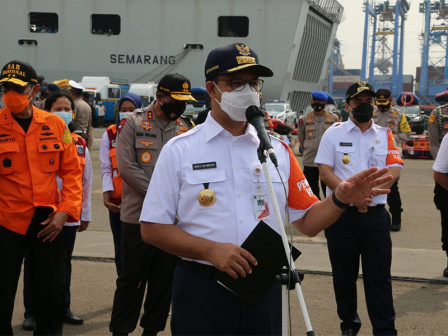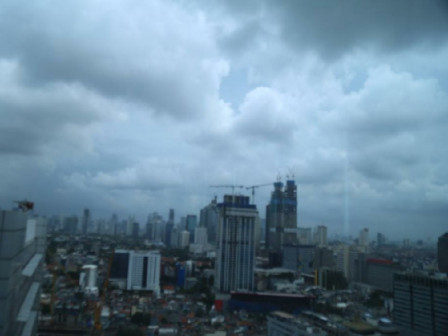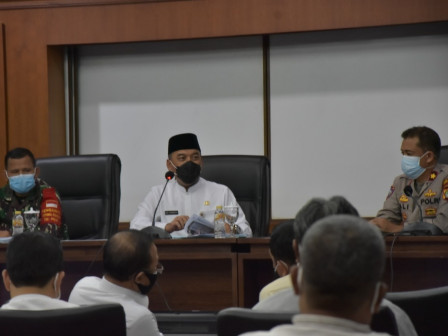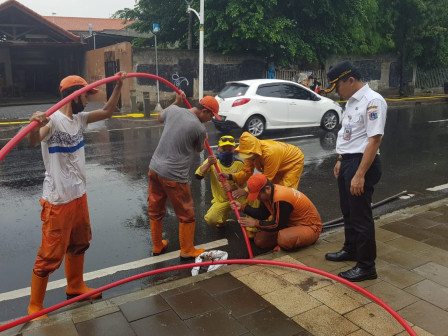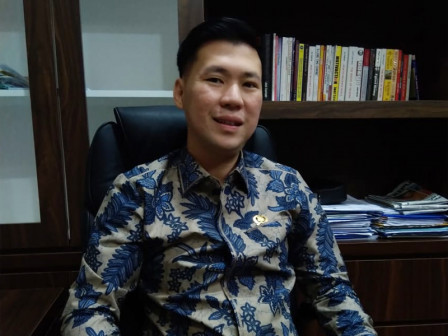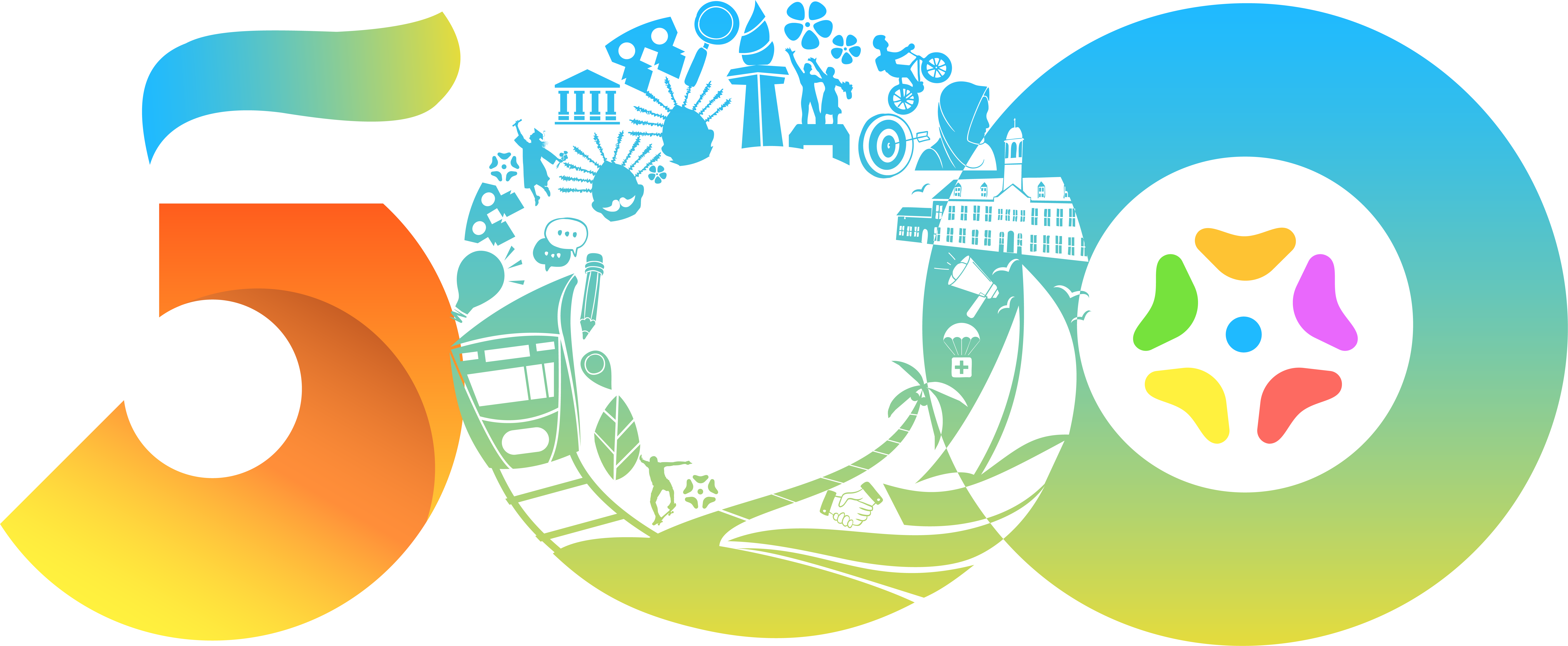Facing Rainy Season, Anies Emphasizes Health Protocols in Saving the Community
Reported by Rezki Apriliya Iskandar | Translated by Nugroho Adibrata
Today we're still in the pandemic situation, so pay attention to all health protocols in all our activities
Jakarta Governor Anies Baswedan, took his opportunity to lead the preparedness ceremony for facing the rainy season in JICT II Field, Tanjung Priok, North Jakarta, Wednesday (11/4).
On that occasion, he emphasized all officers and volunteers should implement health protocols in an effort to save communities during the COVID-19 pandemic.
BMKG Warns of Extreme Weather During Transition to Rainy Season"Today we're still in the pandemic situation, so pay attention to all health protocols in all our activities. Tell all people in the capital that we carry out rescue efforts by observing all health protocols. We have also prepared marked boats for those undergoing self-isolation. They are separated from disease-free communities, as well as places for evacuation. The capacity is increased, keep the distance disciplined," he expressed, as quoted by Jakarta PPID's press release, Wednesday (11/4).
He previously explained that the challenges of the rainy season were not only amid the ongoing COVID-19 pandemic, but also due to the La Nina phenomenon, which caused rainfall in Indonesia to increase significantly. That was why he reiterated three main keywords, which are the principles for all officers, ranks and volunteers to face the rainy season, namely siaga (alert), tanggap (responsive) and galang (togetherness).
1. Siaga means preparing all your potential to face all possibilities.
2. Tanggap means always closely monitoring the development of the weather, especially the rain thus it can respond quickly regardless of the conditions. It will be part of the daily lives of all apple participants in the future. Therefore, SOPs that are synergized between all elements are prepared for optimal performances in the field.
3. Galang means a manifestation of the nation's mutual cooperation in dealing with disasters by gathering all the strengths and shouldering each other together with the mandate given. All activities are joint responsibility which is well collaborated.
"Allow me to say, our drainage system has a threshold, where they are able to accommodate 100 mm rain/day but it depends on the area. But the average is around 100. So if it rains with rainfall below 100, we have to make sure Jakarta is safe, there is no flood. Yet if the rainfall is above 100, as at the beginning of this year in January, we experienced a rainfall of 377 mm/day, 3.7 times the capacity owned. As a result, the water will be stagnant and will cause a flood," he explained.
He also explained three sources of Jakarta's challenges during the rainy season. First, extreme local rainfall, which was now being added to the La Niña phenomenon. Second, the rain is very intensive in mountainous areas (upstream) and brings water to coastal areas (downstream). When this happened, people were advised to be prepared, as the water flow from Katulampa Dam to Jakarta was estimated to be around 9-10 hours, 3 hours to Depok, then 6 hours to Manggarai. Then the last was sea level increasing in areas where the land surface has decreased, resulting in tidal flooding.
"These three challenges are before us. Local rain, water sent from the mountains, and tidal flooding. This year, we hold the ceremony in coastal areas to tell everyone that our concern in dealing with floods is not only water from mountains, not only local rain, but also coastal areas, seashore," he stressed.
He then also emphasized the two main indicators of successfully dealing with the impact of the extreme monsoons were making sure the entire community was safe (no casualties) and that inundation could recede in less than 6 hours after the rains stopped.
"InsyaAllah all those on duty are given health and safety. Certainly don't forget to pray to God for help thus it makes Jakarta a safe city through this rainy season," he closed.
955 personnel are prepared consisting of:
- 265 elements of regional apparatus
- 300 elements of the army
- 120 elements of the police
- 20 people from the Jakarta SAR team, PMI, Baznas, Palyja, Aetra, PT PLN, PAM Jaya
- 100 volunteers for disaster management
While the equipment prepared is:
- Post tent: 1 piece
- Refugee tent: 1 piece
- General refugee tent: 1 piece
- Vulnerable refugee camp: 1 piece
- Refugee tent with close contact of suspected COVID-19: 1 piece
- Health tents: 3 pieces
- General kitchen tents: 3 pieces
- Personnel trucks: 9 units
- Heavy vehicles: 3 units
- Ambulances: 5 units
- Operational vehicles: 22 units
- Public kitchen cars: 5 units
- Boats: 43 units
- Used inner tubes: 100 pieces
- Ring buoy: 10 pieces
